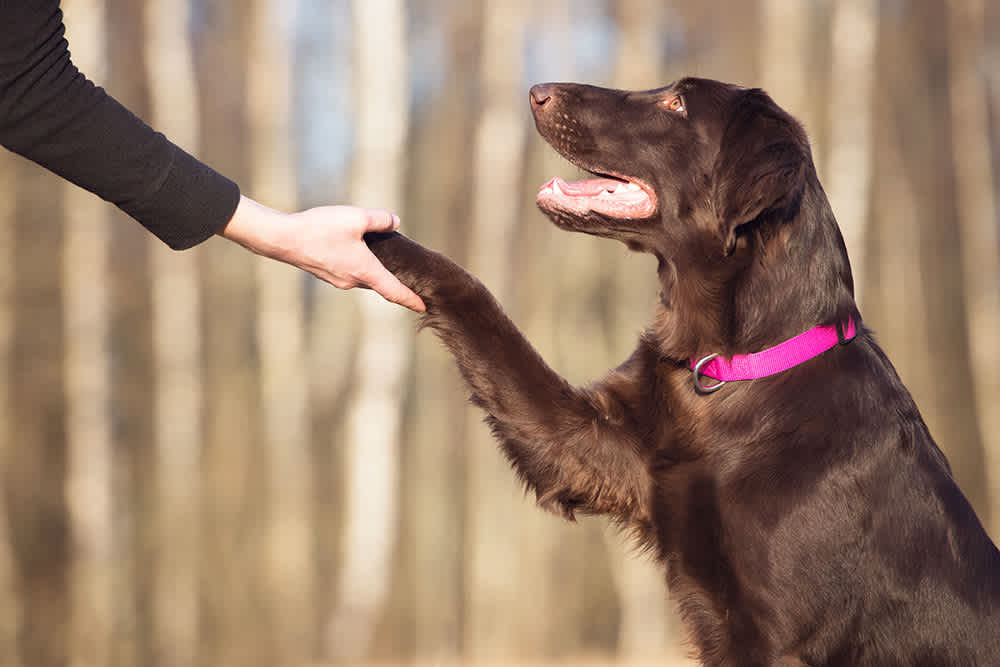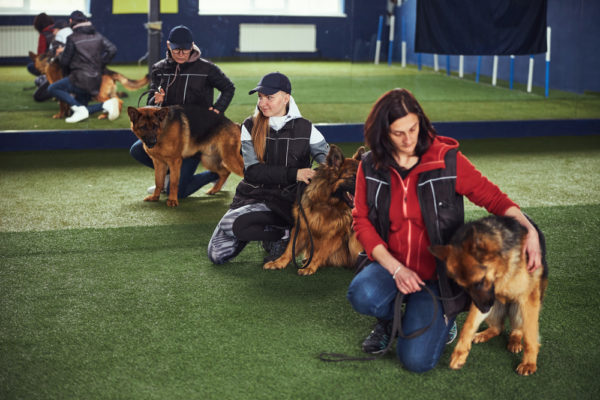Essential Tips for Successful Dog Training: A Guide for Beginners
Top Dog Educating Techniques Every Proprietor Should Know

Favorable Reinforcement Techniques
Using positive support techniques is essential for effective canine training, as it promotes a trusting bond between the pet dog and the instructor. This technique concentrates on satisfying desirable actions rather than penalizing unfavorable ones, producing a setting conducive to discovering. Benefits can consist of treats, praise, or playtime, which encourage pets to duplicate the habits that make them these rewards.

Furthermore, this strategy boosts the dog's interest for training sessions. When pets connect training with favorable experiences, they are a lot more engaged and responsive. Beyond immediate therapy, positive support urges a collaborative partnership in between the pet dog and fitness instructor, reducing stress and anxiety and concern
To optimize effectiveness, it is vital to provide rewards immediately, making certain the pet links the behavior with the support. Fundamentally, favorable support techniques not only produce better-trained pet dogs but likewise promote a harmonious collaboration between canine and owner.
Remote Control Training Method
The clicker training technique is a very reliable technique that builds on the concepts of positive reinforcement by adding a distinctive sound to mark wanted habits. This method uses a small handheld device that generates a clicking sound, enabling trainers to interact with their pet dogs in a clear and instant manner. When a dog executes a behavior that the owner wishes to encourage, the clicker is turned on, complied with by a benefit, commonly in the type of deals with or praise.
The key to effective remote control training lies in uniformity and timing. It is vital to click at the specific minute the wanted habits occurs, guaranteeing that the pet associates the audio with the activity and the subsequent incentive. This approach not only enhances communication but also fosters a more powerful bond between the proprietor and the canine, as it motivates interaction and communication during training sessions.
Clicker training can be related to a selection of commands and actions, from standard obedience to much more complex techniques. Its versatility and performance make it a favored technique amongst expert trainers and family pet proprietors alike, paving the method for a responsive and trained canine buddy.
Chain Training Fundamentals
Effective chain training is crucial for guaranteeing a risk-free and satisfying walking experience for both pets and their proprietors. Dog training. Leash training ought to start very early and be come close to with persistence and uniformity. Start by picking a suitable leash and collar or harness. click here to find out more A level collar might help some canines, while others might gain from a harness that reduces pulling.
Introduce your canine to the chain progressively, permitting them to explore it in a comfortable setting. Practice loose-leash strolling once they are accustomed. This involves satisfying your pet for strolling beside you rather than drawing ahead. Usage treats and praise to strengthen preferred behavior, and be sure to stay assertive and calm.
If your pet begins to pull, quit strolling promptly. Furthermore, method numerous strolling atmospheres to help your dog adjust to diversions.
Regular practice will certainly solidify your pet dog's understanding of chain rules. Keep in mind that chain training is an ongoing procedure; patience and uniformity will generate the ideal outcomes, cultivating a favorable experience for both you and your canine friend.
Socialization Approaches
Socialization is a crucial element of pet training that must preferably begin throughout puppyhood but can be advantageous at any kind of age. Efficient socializing aids canines establish self-confidence and lowers the probability of behavioral concerns. To execute successful socializing techniques, reveal your pet dog to a range of environments, individuals, and other pets.
Start with controlled settings, such as puppy classes or arranged playgroups, where young canines can connect safely. Slowly present your canine to brand-new experiences, including different sounds, surfaces, and activities. Guarantee these encounters are favorable and these details fulfilling to develop a complacency.
For adult canines or those lacking exposure, begin with low-stress scenarios. Short, favorable interactions with tranquil pet dogs and pleasant humans can develop positive associations. Use deals with and praise to strengthen preferable actions throughout these experiences.

Uniformity and Patience
Recognizing the significance of uniformity and persistence in dog training is essential for attaining lasting outcomes. Irregular training can lead to confusion, making it hard for the canine to grasp commands or behaviors, eventually preventing development.
Moreover, perseverance is an important part of effective training. Canines, like human beings, find out at their own speed. Some might grasp ideas swiftly, while others could take longer. It is essential for proprietors to remain calm and encouraging, strengthening favorable actions without resorting to disappointment or penalty. This cultivates a trusting connection between the pet dog and proprietor, urging an extra passionate and ready student.
To cultivate consistency and persistence, establish a regular training routine, use the same commands, and guarantee that all family members apply the same training concepts - Dog training. By doing so, you develop a secure environment conducive to learning, allowing your pet to establish and flourish into a mannerly friend
Final Thought
To conclude, efficient pet dog training techniques, such as positive support, remote control training, and proper chain training, are necessary for cultivating a healthy owner-dog partnership. In addition, applying socialization strategies and keeping uniformity and persistence throughout the training process contributes substantially to a canine's total wellness. By integrating these methods, canine owners can promote the advancement of well-adjusted, obedient family pets, ultimately boosting the lifestyle for both the pet dog and the owner.
Amongst the most popular approaches are favorable reinforcement, remote control training, and leash training, each offering special benefits that add to a well-behaved pet. As we check out these basic techniques, it comes to read review be apparent that understanding their nuances can significantly affect the training experience and the pet's general actions.Utilizing positive reinforcement strategies is essential for efficient canine training, as it promotes a trusting bond in between the trainer and the canine.In final thought, efficient pet training strategies, such as positive reinforcement, clicker training, and correct leash training, are important for cultivating a healthy and balanced owner-dog partnership. By incorporating these approaches, pet dog proprietors can promote the growth of well-adjusted, obedient pet dogs, ultimately improving the high quality of life for both the pet and the proprietor.